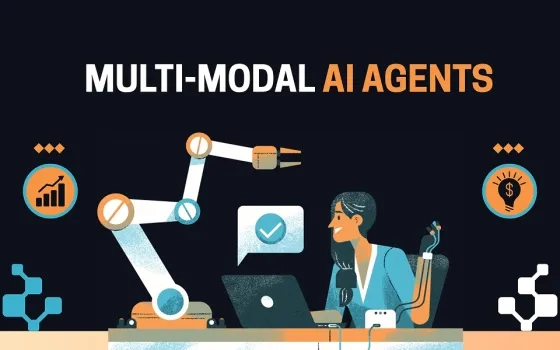Agriculture, for decades, had been associated with the production of basic food crops. Agriculture and farming were synonymous so long as farming was not commercialized. But as the process of economic development accelerated, many more other occupations allied to farming came to be recognized as a part of agriculture.
At present, agriculture besides farming includes forestry, fruit cultivation, dairy, poultry, mushroom, bee keeping, arbitrary, etc. Today, marketing, processing, distribution of agricultural products etc. are all accepted as a part of modern agriculture.
In country like India where majority of the population around more than 70% of the total population is directly or in-directly depended on agri-based businesses for their livelihood, the quality and quantity has to be improved with time. For the betterment of our citizens production and processing needs to technology driven as because the old method of farming and food processing cannot judicially use the whole lot of raw materials. Old form of farming is very time consuming and the products are prone to damage because of natural microbes and nature. So, I believe with time modern form of harvesting is the need of the hour. In, western countries farmers belong to the high class of the society through technology driven farming they are very much economically stable. This economic stability not only helps the individual to grow but also increases the countries economic growth too.
Agriculture plays a crucial role in the life of an economy. It is the backbone of our economic system. Agriculture not only provides food and raw material but also employment opportunities to a very large proportion of population.
HOW TECHNOLOGY IS IMPACTING AGRICULTURE??
Technological innovations have greatly shaped agriculture throughout time. From the creation of the plow to the global positioning system (GPS) driven precision farming equipment, humans have developed new ways to make farming more efficient and grow more food. We are constantly working to find new ways to irrigate crops or breed more disease resistant varieties. These iterations are key to feeding the ever-expanding global population with the
decreasing freshwater supply.
1960s
The Green Revolution
In the mid-1940s US. Vice President Henry Wallace spearheaded a program to help developing nations feed their growing populations. The program included four scientists, one of whom was Dr. Norman Borlaug.
Borlaug started a growing process that allowed plants to thrive with new irrigation and crop management techniques. By the 1960s, the benefits of what was nicknamed the “Green Revolution” were apparent when successful new wheat varieties were made available in countries across the globe.
1974
Original single active ingredient Roundup Herbicide released
A new herbicide using glyphosate as the active ingredient was developed. Glyphosate-based herbicide is used by farmers to control weeds in their crops. Roundup branded glyphosate-based herbicides also made their way into lawn and garden products, which allow landowners to kill weeds along sidewalks, driveways, gardens, and fences.

1975
Rotary combines are introduced
The first twin-rotor system combine was created by Sperry-New Holland. This allowed the crop to be cut and separated in one pass over the field. For corn, it not only separated the husk and ears, but shelled the kernels, and chopped the stalks.

1982
First genetically modified plant cell
Scientists working at Monsanto Company became the first in the world to genetically modify a plant cell. The team used Agrobacterium to introduce a new gene into the petunia plant and announced their achievement the following year. Within five years, Monsanto researchers planted their first outdoor trials of a genetically modified crop – tomatoes that were resistant to Roundup agricultural herbicide, insects, or viruses. The Agrobacterium method first used in 1982 is still in use today by Monsanto scientists and by other companies’ scientists
1994
Satellite technology advances farming
For the first time, farmers were able to use satellite technology to see their farms from overhead, allowing for better tracking and planning.
1996
Monsanto’s first GMO crops become commercially available
Roundup Ready®soybeans and Bollgard insect-protected cotton became the first genetically-modified row crops available to farmers. The soybeans provided tolerance to glyphosate-based agricultural herbicide. The GM traits in cotton provided protection against the cotton boll worm, tobacco bud worm, and pink boll worm.
2000s
Software and mobile devices helps farmers have better harvests
Like many people, farmers started carrying mobile devices, which allowed them to stay connected to colleagues while in the field. This also meant they now had access to data needed while on-the-go, including the ability to place orders for seed or fertilizer at any time or in any place.
2015
Data revolutionizes farming potential
Farmers make decisions based on the information they have on-hand, which is why data has helped them harness the power of information to make better-informed decisions that allow them to use resources more sustainably. The Climate Corporation’s Climate FieldView platform is a digital platform that brings together data collection, agronomic modeling, and local weather monitoring, which gives farmers a better understanding of their fields. These tools allow farmers to plan for better harvests and make decisions that are better for the planet.
Artificial Intelligence in Agriculture : Using Modern Day AI to Solve Traditional Farming Problems
Life-cycle of Agriculture:
Preparation of soil: It is the initial stage of farming where farmers prepare the soil for sowing seeds. This process involves breaking large soil clumps and remove debris, such as sticks, rocks, and roots. Also, add fertilizers and organic matter depend on the type of crop to create an ideal situation for crops.
Sowing of seeds: This stage requires taking care of the distance between two seeds, depth for planting seeds. At this stage climatic conditions such as temperature, humidity, and rainfall play an important role.
Adding Fertilizers: To maintain soil fertility is an important factor so the farmer can continue to grow nutritious crops and healthy crops. Farmers turn to fertilizers because these substances contain plant nutrients such as nitrogen, phosphorus, and potassium. Fertilizers are simply planted nutrients applied to agricultural fields to supplement the required elements found naturally in the soil. This stage also determines the quality of the crop
Irrigation: This stage helps to keep the soil moist and maintain humidity. Underwatering or overwatering can hamper the growth of crops and if not done properly it can lead to damaged crops.
Weed protection: Weeds are unwanted plants that grow near crops or at the boundary of farms. Weed protection is important to factor as weed decreases yields, increases production cost, interfere with harvest, and lower crop quality
Harvesting: It is the process of gathering ripe crops from the fields. It requires a lot of laborers for this activity so this is a labor-intensive activity. This stage also includes post-harvest handling such as cleaning, sorting, packing, and cooling.
Storage: This phase of the post-harvest system during which the products are kept in such a way as to guarantee food security other than during periods of agriculture. It also includes packing and transportation of crops
Challenges faced by farmers by using traditional methods of farming
Listing down general challenges that exist in the agricultural domain.
o In farming climatic factors such as rainfall, temperature and humidity play an important role in the agriculture life cycle. Increasing deforestation and pollution result in climatic changes, so it’s difficult for farmers to take decisions to prepare the soil, sow seeds, and harvest.
o Every crop requires specific nutrition in the soil. There are 3 main nutrients nitrogen(N), phosphorous(P) and potassium(K) required in soil. The deficiency of nutrients can lead to poor quality of crops.
o As we can see from the agriculture lifecycle that weed protection plays an important role. If not controlled it can lead to an increase in production cost and also it absorbs nutrients from the soil which can cause nutrition deficiency in the soil.
Applications of Artificial Intelligence in Agriculture
The industry is turning to Artificial Intelligence technologies to help yield healthier crops, control pests, monitor soil, and growing conditions, organize data for farmers, help with the workload, and improve a wide range of agriculture-related tasks in the entire food supply chain.
Use of weather forecasting: With the change in climatic condition and increasing pollution it’s difficult for farmers to determine the right time for sowing seed, with help of Artificial Intelligence farmers can analyze weather conditions by using weather forecasting which helps they plan the type of crop can be grown and when should seeds be sown.
Soil and crop health monitoring system: The type of soil and nutrition of soil plays an important factor in the type of crop is grown and the quality of the crop. Due to increasing, deforestation soil quality is degrading and it’s hard to determine the quality of the soil.
A German-based tech start-up PEAT has developed an AI-based application called Plantix that can identify the nutrient deficiencies in soil including plant pests and diseases by which farmers can also get an idea to use fertilizer which helps to improve harvest quality. This app uses image recognition-based technology. The farmer can capture images of plants using smartphones. We can also see soil restoration techniques with tips and other solutions through short videos on this application.
Similarly, Trace Genomics is another machine learning-based company that helps farmers to do a soil analysis to farmers. Such type of app helps farmers to monitor soil and crop’s health conditions and produce healthy crops with a higher level of productivity.

Analyzing crop health by drones: SkySqurrel Technologies has brought drone-based Ariel imaging solutions for monitoring crop health. In this technique, the drone captures data from fields and then data is transferred via a USB drive from the drone to a computer and analyzed by experts.
This company uses algorithms to analyze the captured images and provide a detailed report containing the current health of the farm. It helps the farmer to identify pests and bacteria helping farmers to timely use of pest control and other methods to take required action
Precision Farming and Predictive Analytics: AI applications in agriculture have developed applications and tools which help farmers inaccurate and controlled farming by providing them proper guidance to farmers about water management, crop rotation, timely harvesting, type of crop to be grown, optimum planting, pest attacks, nutrition management.
While using the machine learning algorithms in connection with images captured by satellites and drones, AI-enabled technologies predict weather conditions, analyze crop sustainability and evaluate farms for the presence of diseases or pests and poor plant nutrition on farms with data like temperature, precipitation, wind speed, and solar radiation.
Farmers without connectivity can get AI benefits right now, with tools as simple as an SMS-enabled phone and the Sowing App. Meanwhile, farmers with Wi-Fi access can use AI applications to get a continually AI-customized plan for their lands. With such IoT- and AI-driven solutions, farmers can meet the world’s needs for increased food sustainably growing production and revenues without depleting precious natural resources.
In the future, AI will help farmers evolve into agricultural technologists, using data to optimize yields down to individual rows of plants
Agricultural Robotics: AI companies are developing robots that can easily perform multiple tasks in farming fields. This type of robot is trained to control weeds and harvest crops at a faster pace with higher volumes compared to humans.
These types of robots are trained to check the quality of crops and detect weed with picking and packing of crops at the same time. These robots are also capable to fight with challenges faced by agricultural force labor.
AI-enabled system to detect pests: Pests are one of the worst enemies of the farmers which damages crops.
AI systems use satellite images and compare them with historical data using AI algorithms and detect that if any insect has landed and which type of insect has landed like the locust, grasshopper, etc. And send alerts to farmers to their smartphones so that farmers can take required precautions and use required pest control thus AI helps farmers to fight against pests
Conclusion
Artificial Intelligence in agriculture not only helping farmers to automate their farming but also shifts to precise cultivation for higher crop yield and better quality while using fewer resources.
Companies involved in improving machine learning or Artificial Intelligence-based products or services like training data for agriculture, drone, and automated machine making will get technological advancement in the future will provide more useful applications to this sector helping the world deal with food production issues for the growing population.























